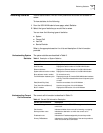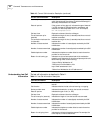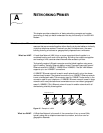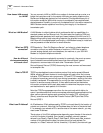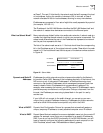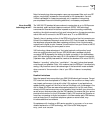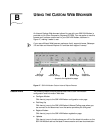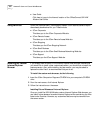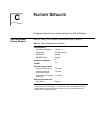
What is a network? 99
Note that employing data compression upon pre-compressed files, such as a ZIP
archive, may actually increase the time required for file transmission. As such,
V.42bis is preferable in these circumstances, as it is capable of recognizing
pre-compressed files and withholding additional, unnecessary compression.
How does 56K
technology work?
The V.90 56K ITU standard allows modems to receive data at up to 56 Kbps over
the standard, public switched telephone network (PSTN). V.90 technology
overcomes the theoretical limitations imposed on previous analog modems by
exploiting the digital connections that most Internet and on-line service providers
use at their end to connect to the PSTN, such as a T1 or an ISDN BRI line.
Typically, the only analog portion of the PSTN is the phone line that connects your
home to the telephone company’s central office (CO). Over the past two decades,
the telephone companies have been replacing portions of their original analog
networks with digital circuits. However, the connection from your home to the CO
will likely remain analog for some years to come.
V.90 technology takes advantage of the typical network configuration found
when an analog modem (such as your 56K LAN Modem) accesses a digitally
connected ISP. By bypassing the analog-to-digital conversion in the downstream
path, 56K technology can use nearly all of the available 64K network bandwidth.
(Upstream data, typically less sensitive, travels at the standard V.34 rate of 33.6K.)
Based on “encoding” rather than “modulation”, the result is download speeds
once thought not possible. Older, V.34 modems treat the PSTN as if it were entirely
analog; they therefore cannot take advantage of the bandwidth made available
when one end of the connection--that of your ISP, for instance--is completely
digital.
Possible Limitations
Note that several factors may affect your 56K LAN Modem’s performance. Current
FCC rules limit download speeds to 53 Kbps. Poor line conditions or heavy traffic
may impact performance, just as with older V.34 modems. In real applications,
speeds typically range from the 40s to the low 50s (Kbps), with the average in the
mid-to upper 40s.There are cases where performance is in the 30s, and others
where true V.90 performance may not be possible. Note that both your phone line
as well as your service provider must be V.90 capable; this means that your service
provider must conform to the V.90 standard. Lastly, V.90 requires that there be no
more than one analog-to-digital conversion in the downstream path; PBX devices,
such as those found in corporate telephone systems or some hotels, may
introduce additional conversions.
For assistance with locating an 56K service provider in your area, or for a more
detailed explanation of 56K technology, visit 3Com’s 56K Web page at
http://www.3com.com/56k.



